
Laredo: A Gem of Culture and History on the Border
Discover Laredo, Texas - A vibrant blend of American and Mexican cultures, rich history, exciting festivals, and outdoor adventures on the Rio Grande.
Laredo, Texas, is a city that offers a unique blend of American and Mexican culture. Nestled on the banks of the Rio Grande, Laredo stands as a vibrant gateway between two nations. The city is rich in history, dating back to its founding in 1755. Visitors can explore the San Agustin Plaza, where historic buildings like the San Agustin Cathedral still stand as a testament to the city's past. Laredo's cultural diversity is evident in its many festivals, like the month-long Washington's Birthday Celebration, which is one of the largest in the country. The streets come alive with parades, fireworks, and traditional dances, offering tourists a chance to immerse themselves in local traditions. For those interested in outdoor activities, the nearby Lake Casa Blanca International State Park provides opportunities for fishing, boating, and hiking. The warm Texas climate makes it an ideal spot for year-round recreation. Additionally, the city's many shopping districts, like the Outlet Shoppes at Laredo, offer a mix of popular brands and local crafts, making for a great shopping experience.
Local tips in Laredo
- Visit during the Washington's Birthday Celebration in February to experience local culture and festivities.
- Explore the historic San Agustin Plaza for a glimpse of Laredo's rich past.
- Take advantage of the warm weather by visiting Lake Casa Blanca International State Park.
- Don't miss the Outlet Shoppes at Laredo for a mix of high-end brands and unique local crafts.
- Try local Tex-Mex cuisine at one of the many authentic restaurants in the city.
Laredo: A Gem of Culture and History on the Border
Laredo, Texas, is a city that offers a unique blend of American and Mexican culture. Nestled on the banks of the Rio Grande, Laredo stands as a vibrant gateway between two nations. The city is rich in history, dating back to its founding in 1755. Visitors can explore the San Agustin Plaza, where historic buildings like the San Agustin Cathedral still stand as a testament to the city's past. Laredo's cultural diversity is evident in its many festivals, like the month-long Washington's Birthday Celebration, which is one of the largest in the country. The streets come alive with parades, fireworks, and traditional dances, offering tourists a chance to immerse themselves in local traditions. For those interested in outdoor activities, the nearby Lake Casa Blanca International State Park provides opportunities for fishing, boating, and hiking. The warm Texas climate makes it an ideal spot for year-round recreation. Additionally, the city's many shopping districts, like the Outlet Shoppes at Laredo, offer a mix of popular brands and local crafts, making for a great shopping experience.
When is the best time to go to Laredo?
Iconic landmarks you can’t miss
Mall del Norte
Discover Mall del Norte in Laredo, Texas: a premier shopping destination with diverse stores, delicious dining, and family-friendly entertainment options.
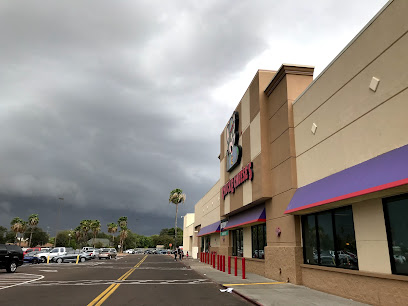
Lake Casa Blanca International State Park
Explore the natural beauty and outdoor adventures at Lake Casa Blanca International State Park in Laredo, Texas.

Uni-Trade Stadium
Experience the excitement of live sports at Uni-Trade Stadium in Laredo, Texas, home to thrilling games and unforgettable events.
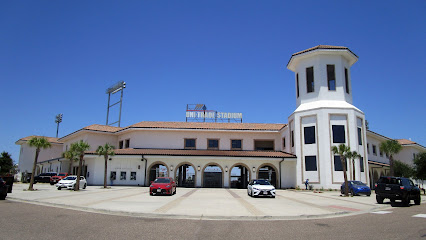
Best Western San Isidro Inn
Discover comfort and convenience at Best Western San Isidro Inn, your ideal base for exploring the vibrant culture of Laredo, Texas.

San Augustin Plaza
Experience the charm of San Augustin Plaza in Laredo, Texas, where history, culture, and serenity blend seamlessly in a picturesque park setting.
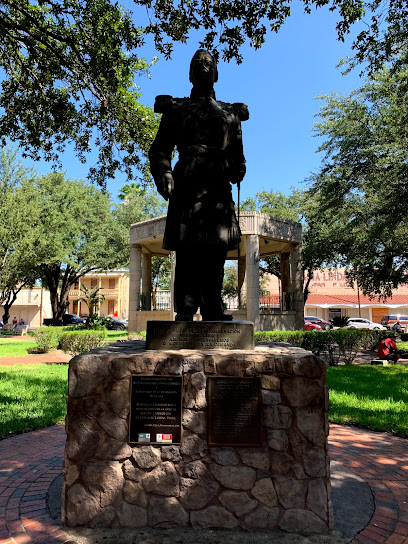
San Agustin Catholic Cathedral
Discover the stunning architecture and rich history of San Agustin Catholic Cathedral, a must-visit landmark in Laredo, Texas.
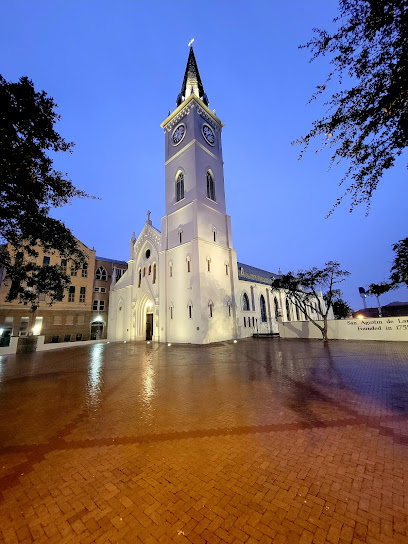
The Rialto Hotel-Laredo
Discover the charm of Laredo at The Rialto Hotel, where historical elegance meets modern comfort in the heart of Texas.

Tru by Hilton Laredo Airport
Discover comfort and convenience at Tru by Hilton Laredo Airport, your ideal starting point for exploring Laredo's cultural treasures.

Jarvis Plaza
Experience the natural beauty and vibrant community spirit at Jarvis Plaza, a serene park in the heart of Laredo, Texas.
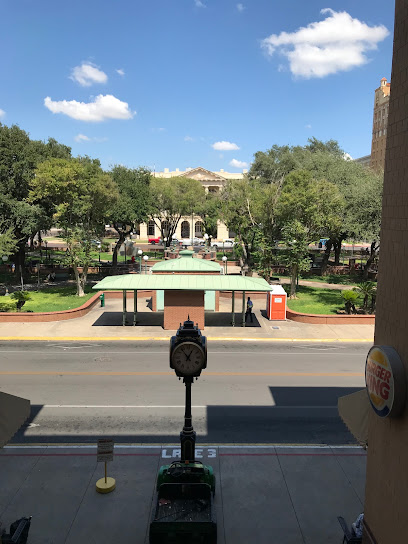
Max A. Mandel Municipal Golf Course
Discover the Max A. Mandel Municipal Golf Course in Laredo, Texas, where lush greens meet stunning views for an unforgettable golfing experience.

LubeZone Truck Lube Center
Experience top-notch oil change services at LubeZone Truck Lube Center in Laredo, Texas, ensuring your vehicle's optimal performance on the road.
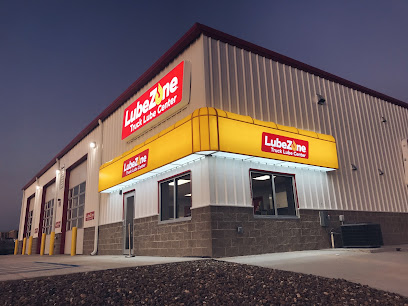
Laredo Center For the Arts
Explore the Laredo Center for the Arts: a vibrant hub of creativity showcasing local talent and cultural events in Laredo, Texas.
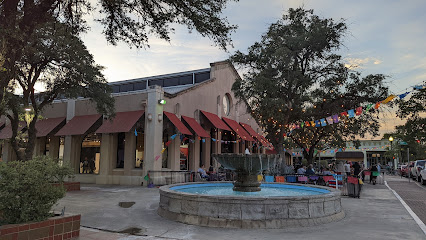
Plantation Centre
Experience the ultimate shopping adventure at Plantation Centre in Laredo, Texas, where shopping, dining, and entertainment meet for an unforgettable visit.

Home2 Suites by Hilton Laredo Airport
Experience Texas hospitality at Home2 Suites by Hilton Laredo Airport, your perfect extended stay hotel for comfort and convenience.

Republic of the Rio Grande Museum
Explore the Republic of the Rio Grande Museum, a cultural gem in Laredo, Texas, showcasing the rich history and heritage of the region's past.
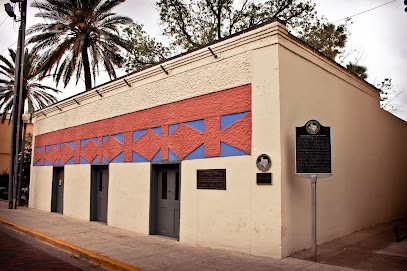
Unmissable attractions to see
Lake Casa Blanca International State Park
Experience the natural beauty and outdoor adventures at Lake Casa Blanca International State Park in Laredo, Texas, a perfect getaway for nature enthusiasts.
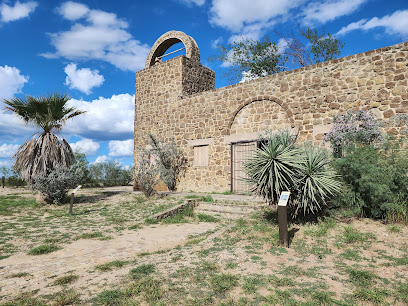
North Central Park
Explore the serene North Central Park in Laredo, Texas, a perfect blend of nature, recreation, and community events for every traveler.
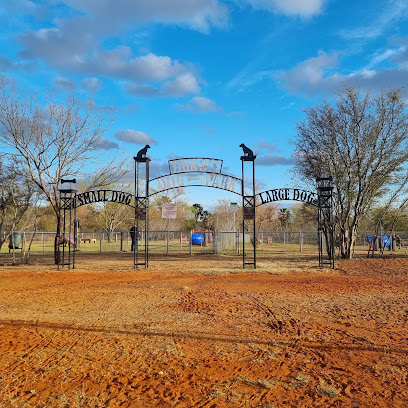
Slaughter Park
Explore Slaughter Park in Laredo, Texas—a vibrant urban oasis offering recreation, relaxation, and a family-friendly atmosphere.
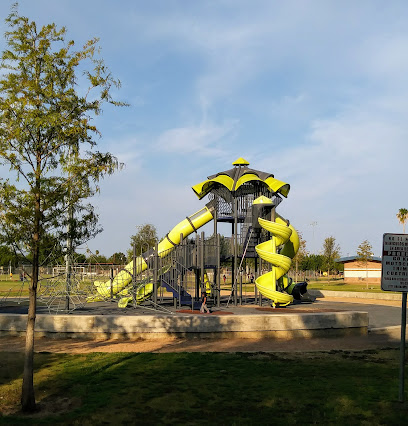
San Augustin Plaza
Discover San Augustin Plaza, a historic park in Laredo, Texas, where culture, architecture, and community come together in a vibrant setting.
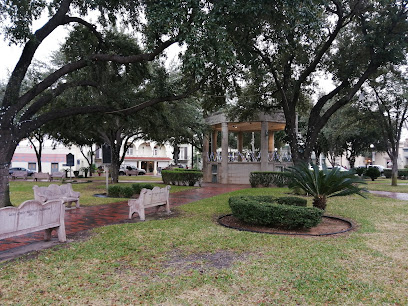
San Agustin Catholic Cathedral
Explore the San Agustin Catholic Cathedral, a stunning historic landmark in Laredo, Texas, embodying architectural beauty and deep cultural significance.
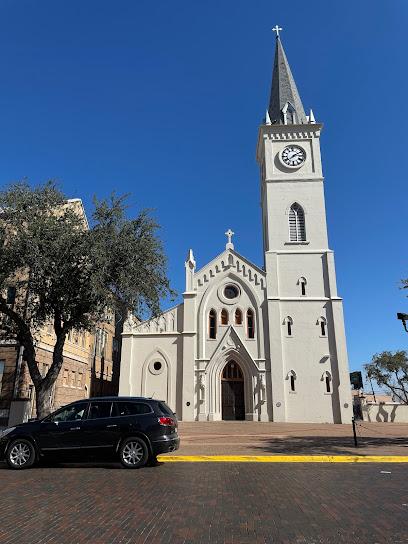
San Agustin Catholic Cathedral
Explore the historic San Agustin Catholic Cathedral in Laredo, Texas, where architectural beauty meets spiritual serenity.

Jarvis Plaza
Discover Jarvis Plaza in Laredo, Texas - a serene park perfect for relaxation, picnics, and cultural events in a lush urban oasis.
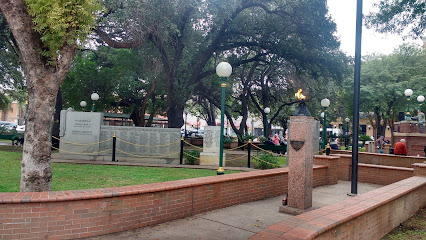
Laredo Water Museum
Explore the Laredo Water Museum, a unique attraction celebrating the history and importance of water in Laredo, Texas.
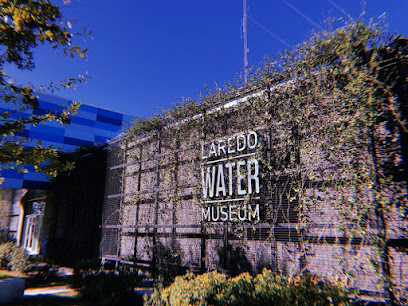
Republic of the Rio Grande Museum
Explore Laredo's unique culture and history at the Republic of the Rio Grande Museum, a captivating destination for all who seek knowledge and inspiration.
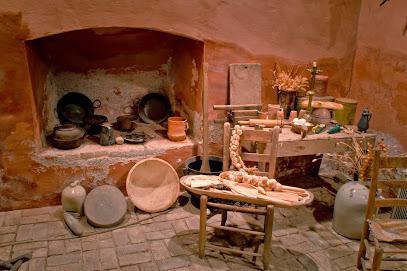
Republic of the Rio Grande Museum
Explore the Republic of the Rio Grande Museum in Laredo for a deep dive into Texas history and the legacy of a unique independent nation.

Laredo Little Theatre
Immerse yourself in Laredo's vibrant arts scene at the Laredo Little Theatre, a beloved venue for performances and community engagement.
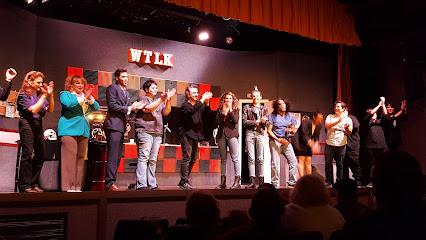
Laredo Safari and Adventure Park
Discover Laredo Safari and Adventure Park, where wildlife encounters and family fun await in a stunning natural setting.
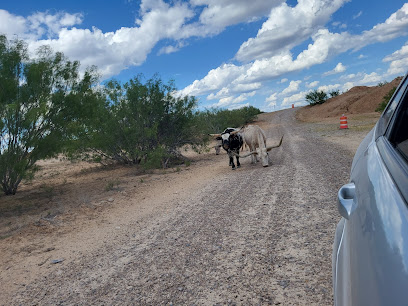
Border Heritage Museum
Explore Laredo's cultural tapestry at the Border Heritage Museum, showcasing the rich history and vibrant stories of the region's border heritage.
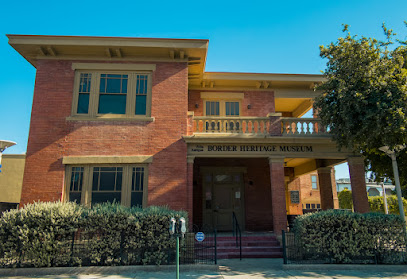
Webb County Heritage Foundation
Explore the rich cultural heritage of Webb County at the Webb County Heritage Foundation, a vibrant nonprofit showcasing the history of Laredo.
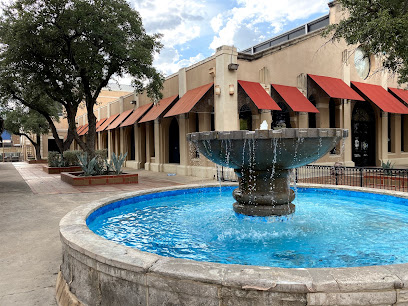
TAMIU Planetarium
Discover the secrets of the universe at TAMIU Planetarium in Laredo, Texas, where astronomy comes to life through stunning visuals and engaging educational programs.
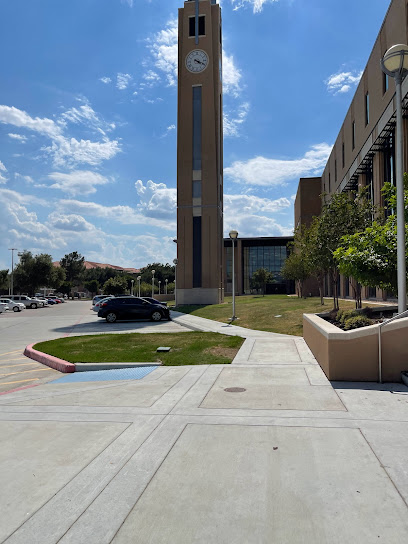
Essential places to dine
Texas Roadhouse
Experience authentic Texan flavors at Texas Roadhouse in Laredo - where delicious steaks meet warm hospitality!

Olive Garden Italian Restaurant
Savor authentic Italian cuisine at Olive Garden in Laredo—where family traditions meet delicious flavors.
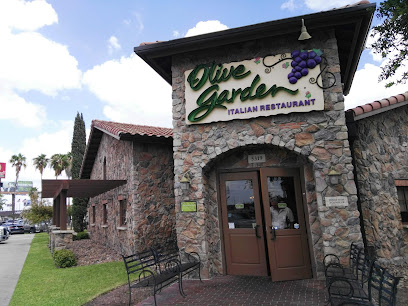
Cheddar's Scratch Kitchen
Savor traditional American cuisine at Cheddar's Scratch Kitchen in Laredo—where every meal is made from scratch with love.

Fuddruckers
Experience gourmet burgers at Fuddruckers in Laredo—where fresh ingredients meet fun dining in an iconic American fast food setting.
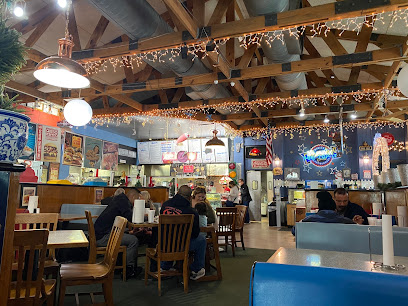
LongHorn Steakhouse
Experience Texas dining at LongHorn Steakhouse in Laredo—where juicy steaks meet warm hospitality in a family-friendly setting.
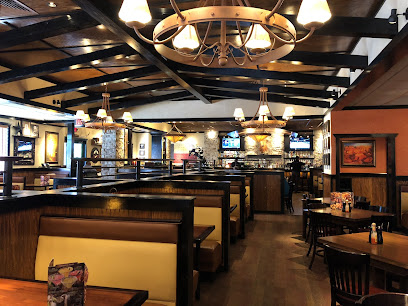
Palenque Grill Hwy 35
Discover the rich flavors of Mexico at Palenque Grill Hwy 35 in Laredo—where delicious cuisine meets vibrant atmosphere.

El Querreque Grill
Experience authentic Mexican flavors at El Querreque Grill in Laredo – where family-friendly dining meets vibrant culinary traditions.
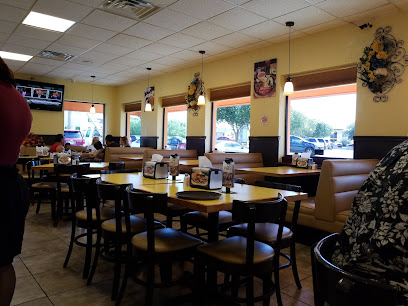
Palenque Grill Loop 20
Experience vibrant flavors and warm hospitality at Palenque Grill Loop 20 in Laredo - your destination for authentic Mexican cuisine.
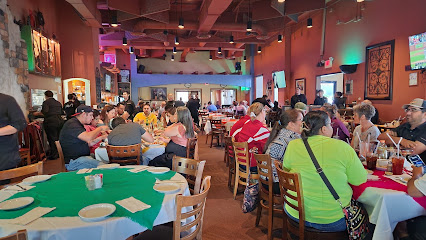
Lira's Restaurant
Discover Lira's Restaurant in Laredo for delicious barbecue and authentic Mexican dishes served in a warm, inviting atmosphere.
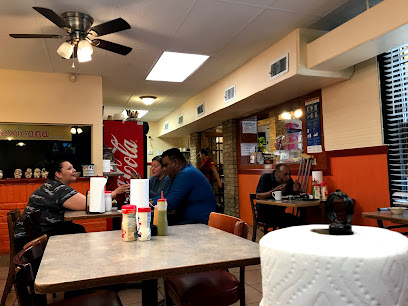
Eduardo's BBQ Steaks & Mexican Grill
Experience the perfect blend of traditional American and Mexican cuisine at Eduardo's BBQ Steaks & Mexican Grill in Laredo.
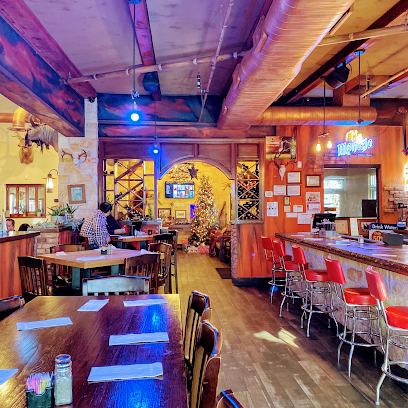
Obregon's Mexican Restaurant # 1
Experience authentic Mexican cuisine at Obregon's Mexican Restaurant #1 in Laredo - where every bite is a celebration of flavor.
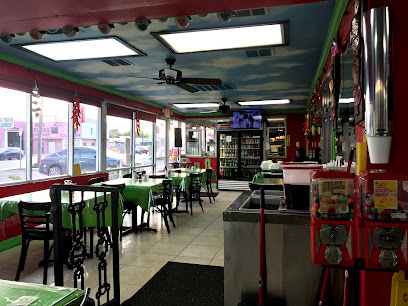
La Finca Bruncheria & Cafe
Experience the vibrant flavors of Laredo at La Finca Bruncheria & Cafe, where delicious breakfast meets a cozy atmosphere.
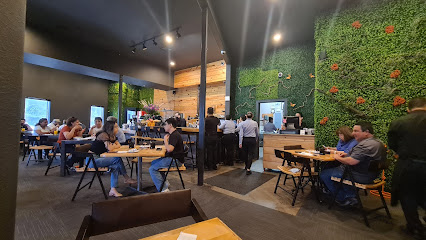
Glass Kitchen
Experience mouthwatering burgers at Glass Kitchen in Laredo - where quality meets flavor in every bite.
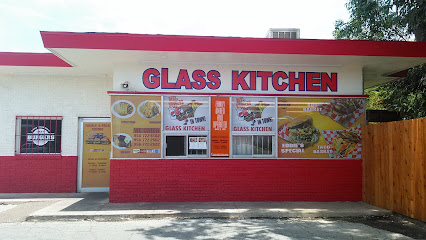
Mi Tierra Cafe Bar and Grill
Experience the vibrant flavors of Mexico at Mi Tierra Cafe Bar and Grill in Laredo – where every meal is a celebration of tradition.
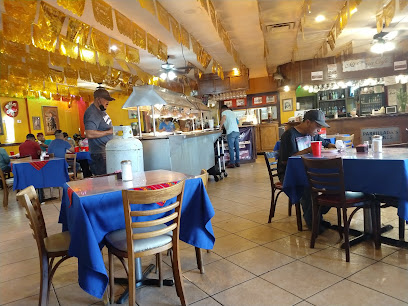
El Capataz
Experience authentic Latin American dining at El Capataz in Laredo – where every meal is a celebration of flavor!
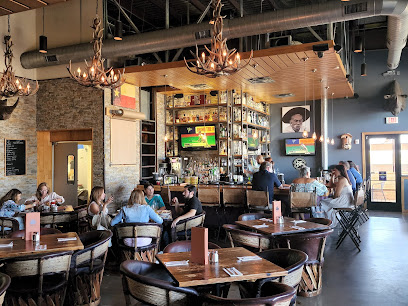
Markets, malls and hidden boutiques
Mall del Norte
Experience the ultimate shopping adventure at Mall del Norte, Laredo's premier destination for retail therapy, dining, and entertainment.
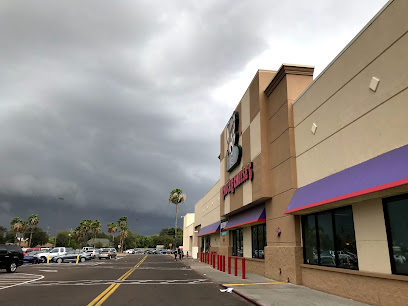
The Outlet Shoppes at Laredo
Experience shopping bliss at The Outlet Shoppes at Laredo, where top brands meet exceptional savings in a vibrant atmosphere.
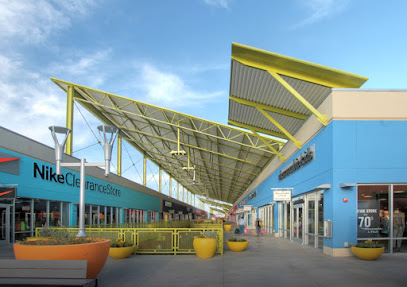
Independence Plaza
Discover Independence Plaza in Laredo, Texas—a vibrant shopping mall with diverse stores, dining options, and a lively atmosphere for all visitors.
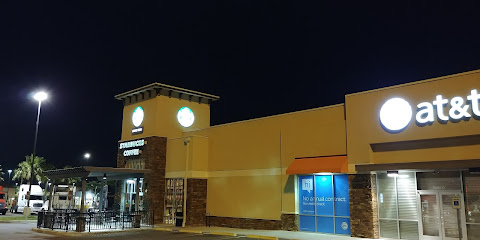
Basket & Pottery Alley
Explore Basket & Pottery Alley in Laredo, Texas, where artistry meets tradition in a vibrant shopping experience full of unique pottery and souvenirs.
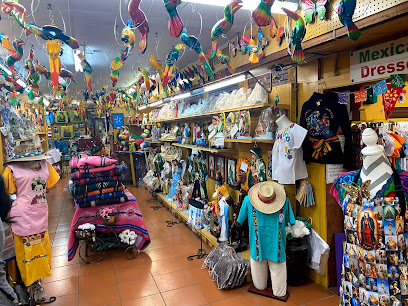
Streets of Laredo Urban Mall
Explore the Streets of Laredo Urban Mall - where shopping meets culture in the heart of Laredo, Texas.

Today's Craft
Explore the vibrant world of creativity at Today's Craft in Laredo, Texas - your go-to destination for artisanal supplies and unique handmade treasures.
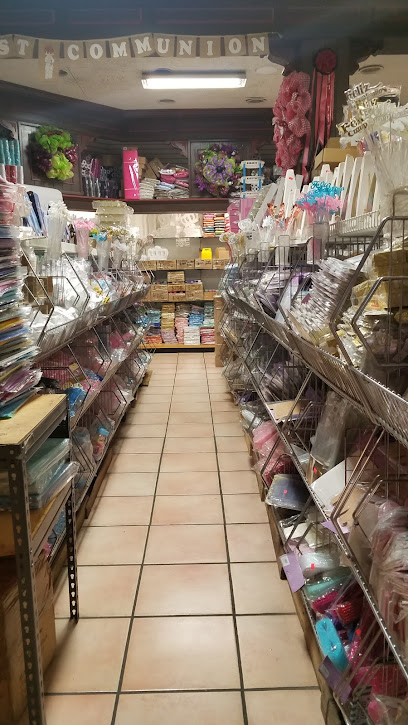
Diana's Imports
Discover authentic Mexican goods and unique home decor at Diana's Imports in Laredo, Texas - a treasure trove of cultural delights.
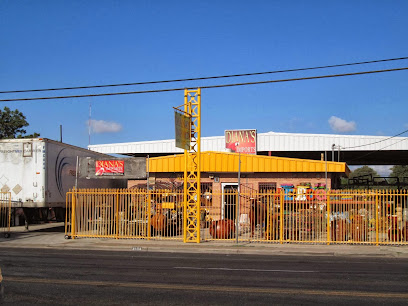
Mike's Western Wear
Discover authentic Western apparel at Mike's Western Wear in Laredo, Texas, where the spirit of the Wild West comes to life through stylish clothing and accessories.
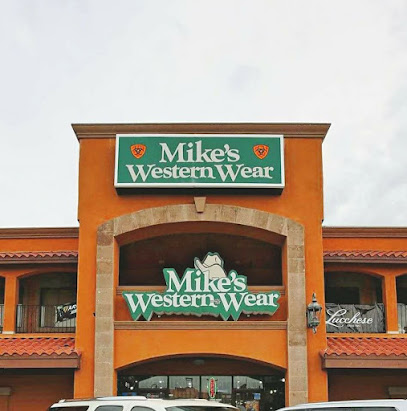
E.T. Collectibles
Explore E.T. Collectibles in Laredo, Texas - A unique store filled with nostalgia, rare finds, and treasures for collectors of all ages.
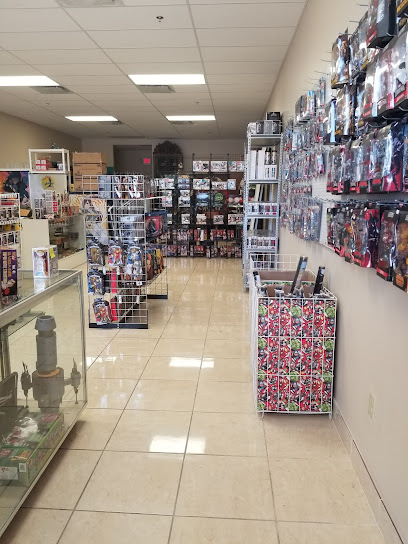
El Alamo Pottery (Alamo Mexican Imports)
Explore the vibrant artistry of El Alamo Pottery in Laredo, offering unique handmade pottery, rustic furniture, and authentic Mexican goods.
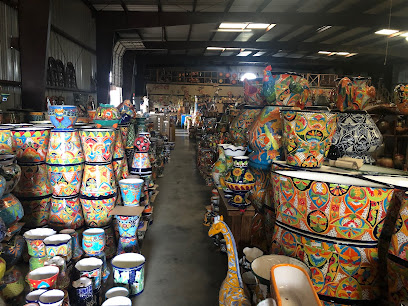
shop195
Explore Shop195 in Laredo, TX, for unique gifts and exquisite jewelry that reflect the local culture and craftsmanship.
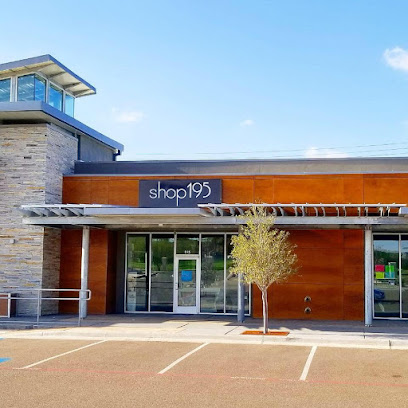
Caro Linda Boutique
Experience the charm of Laredo at Caro Linda Boutique, where unique styles meet personalized service in a chic shopping atmosphere.
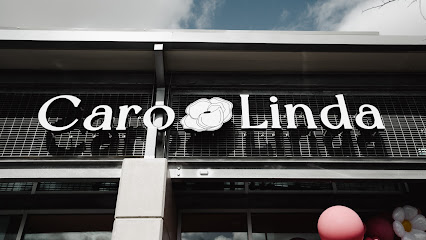
Dragonflies Boutique
Explore Dragonflies Boutique for trendy women's clothing, distinctive jewelry, and unique fashion accessories in Laredo, Texas.

Timeless Treasures
Explore Timeless Treasures in Laredo, Texas, where vintage charm meets rich history in an extraordinary antique shopping experience.
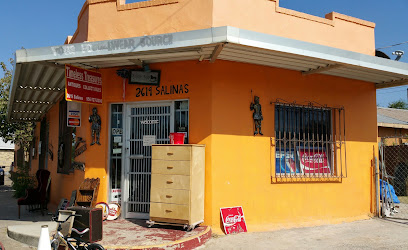
Casa Guero
Explore the heart of Texas through unique gifts and local crafts at Casa Guero in Laredo, a treasure trove waiting for discovery.
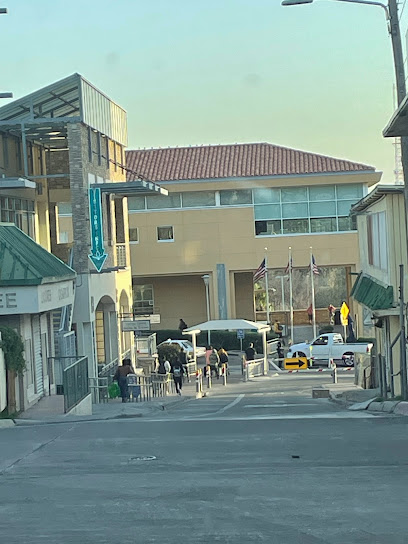
Essential bars & hidden hideouts
Tilted Kilt Pub and Eatery Laredo, Texas
Experience the vibrant sports bar culture of Tilted Kilt Pub and Eatery in Laredo, where delicious food meets an energetic atmosphere.

Border Foundry Restaurant and Bar
Experience the best of Texas dining at Border Foundry Restaurant and Bar, where exquisite flavors meet a vibrant atmosphere and exceptional service.
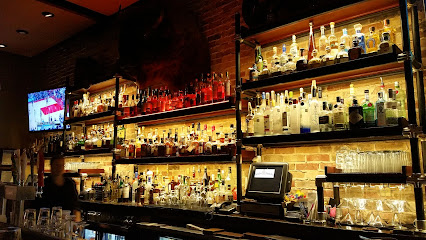
Cosmos Bar & Grill
Experience the vibrant flavors and lively atmosphere at Cosmos Bar & Grill in Laredo, Texas, where every meal is a celebration of taste.
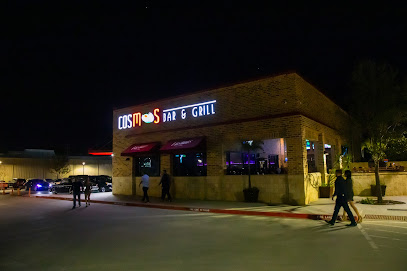
Ojos Locos
Experience the vibrant atmosphere of Ojos Locos, Laredo's top sports bar, where Latin flavors and live sports create a unique dining experience.
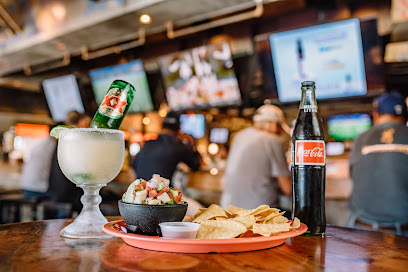
Average Joes
Experience the best in sports entertainment with delicious food and drinks at Average Joe's, Laredo's premier sports bar.

The Laredo International Office Sport Bar and Grill
Discover Laredo's go-to spot for sports, great food, and family-friendly fun at The Laredo International Office Sport Bar and Grill.
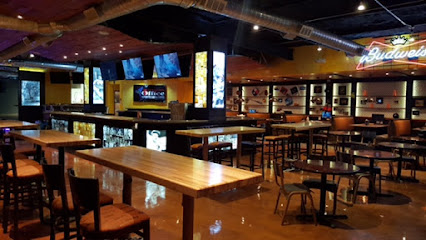
Planeta 80 Bar & Grill
Discover the vibrant flavors of Laredo at Planeta 80 Bar & Grill, a perfect blend of grilled delicacies and lively nightlife.
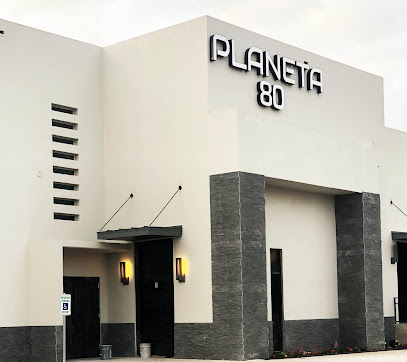
Blue Moon Country Bar & Patio
Discover the lively spirit of Laredo at Blue Moon Country Bar & Patio, where great drinks and live music create unforgettable moments.
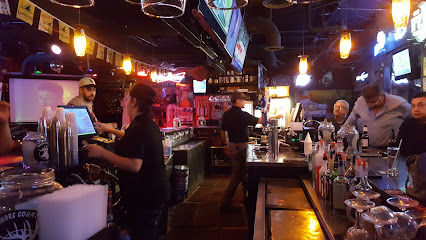
Frontera Beer and Wine Garden
Experience the vibrant atmosphere at Frontera Beer and Wine Garden, Laredo's premier destination for craft beers and fine wines.
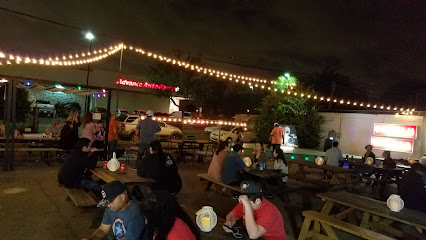
Culture Social Bar
Experience the vibrant flavors and spirited atmosphere of Culture Social Bar in Laredo, Texas, a hub for cocktails, tapas, and socializing.
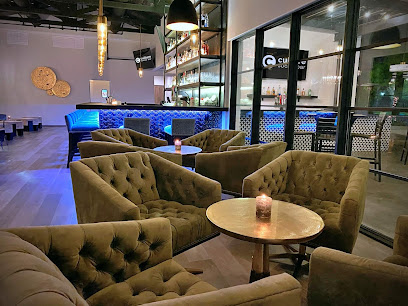
On the Rocks Tavern
Discover the vibrant nightlife at On the Rocks Tavern in Laredo, Texas, where great drinks and friendly locals await.

The Cold Brew Rock Bar
Unwind at The Cold Brew Rock Bar in Laredo, Texas, where vibrant live music meets a relaxed atmosphere and a diverse drink selection.
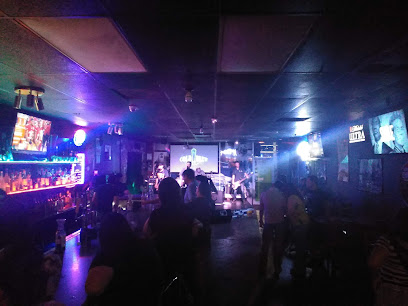
Whispers Bar & Lounge
Experience the vibrant atmosphere and delectable grilled dishes at Whispers Bar & Lounge, a must-visit destination in Laredo, Texas.
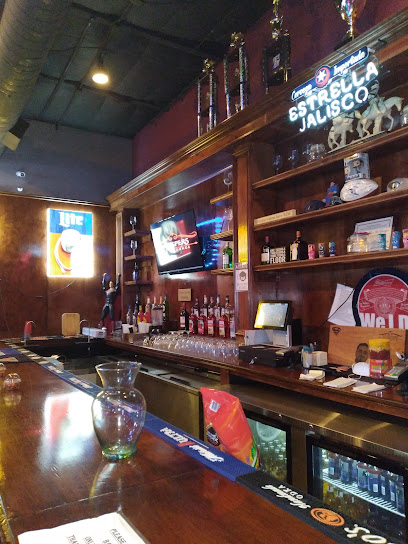
Cowboys Bar & Grill
Discover the spirited vibe of Cowboys Bar & Grill in Laredo, Texas, a local favorite for live music, dancing, and delicious Texan cuisine.
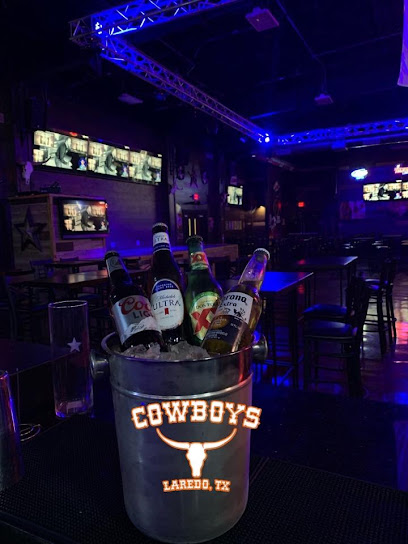
Bar Nido
Experience the lively ambiance of Bar Nido, a premier bar in Laredo, Texas, offering craft cocktails, delicious bites, and live entertainment for an unforgettable night.
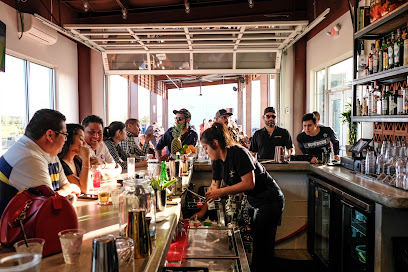
Local Phrases
-
- HelloHola
[OH-lah] - GoodbyeAdiós
[ah-DYOHSS] - YesSí
[see] - NoNo
[noh] - Please/You're welcomePor favor/De nada
[pohr fah-BOHR/deh NAH-dah] - Thank youGracias
[GRAH-syahss] - Excuse me/SorryDisculpe/Lo siento
[dee-SKUL-peh/loh SYEHN-toh] - How are you?¿Cómo estás?
[KOH-moh ehs-TAHS] - Fine. And you?Bien. ¿Y tú?
[byehn. ee too] - Do you speak English?¿Hablas inglés?
[AH-blahss een-GLEHS] - I don't understandNo entiendo
[noh ehn-TYEN-doh]
- HelloHola
-
- I'd like to see the menu, pleaseQuisiera ver el menú, por favor
[kee-SYE-rah behr ehl meh-NOO, pohr fah-BOHR] - I don't eat meatNo como carne
[noh KOH-moh KAHR-neh] - Cheers!¡Salud!
[sah-LOOD] - I would like to pay, pleaseMe gustaría pagar, por favor
[meh goos-tee-RAH pah-GAHR, pohr fah-BOHR]
- I'd like to see the menu, pleaseQuisiera ver el menú, por favor
-
- Help!¡Ayuda!
[ah-YOO-dah] - Go away!¡Vete!
[VEH-teh] - Call the Police!¡Llama a la policía!
[YAH-mah ah lah poh-lee-SEE-ah] - Call a doctor!¡Llama a un médico!
[YAH-mah ah oon MEH-dee-koh] - I'm lostEstoy perdido
[ehs-TOY pehr-DEE-doh] - I'm illEstoy enfermo
[ehs-TOY ehn-FEHR-moh]
- Help!¡Ayuda!
-
- I'd like to buy...Quisiera comprar...
[kee-SYE-rah kohm-PRAR] - I'm just lookingSólo estoy mirando
[SOH-loh ehs-TOY mee-RAHN-doh] - How much is it?¿Cuánto cuesta?
[KWAHN-toh KWEHS-tah] - That's too expensiveEsto es demasiado caro
[EH-stoh ehs deh-mah-SYA-do KA-roh] - Can you lower the price?¿Puede bajar el precio?
[PWEH-deh BAH-hahr ehl PREH-syoh]
- I'd like to buy...Quisiera comprar...
-
- What time is it?¿Qué hora es?
[keh OR-ah ehs] - It's one o'clockEs la una
[ehs lah OO-nah] - Half past (10)Y media (10)
[ee MEH-dee-ah (dies)] - MorningMañana
[mah-NYAH-nah] - AfternoonTarde
[TAHR-deh] - EveningNoche
[NOH-cheh] - YesterdayAyer
[ah-YEHR] - TodayHoy
[HOY] - TomorrowMañana
[mah-NYAH-nah] - 1Uno
[OO-noh] - 2Dos
[dohss] - 3Tres
[trehs] - 4Cuatro
[KWAH-troh] - 5Cinco
[SEEN-koh] - 6Seis
[seh-ees] - 7Siete
[SYEH-teh] - 8Ocho
[OH-choh] - 9Nueve
[NWEH-veh] - 10Diez
[dyehss]
- What time is it?¿Qué hora es?
-
- Where's a/the...?¿Dónde está el/la...?
[DOHN-deh ehs-TAH ehl/lah] - What's the address?¿Cuál es la dirección?
[KWAHL ehs lah dee-rehk-SYOHN] - Can you show me (on the map)?¿Puedes mostrarme (en el mapa)?
[PWEH-dehs mohs-TRAHR-meh (ehn ehl MAH-pah)] - When's the next (bus)?¿Cuándo pasa el próximo (autobús)?
[KWAHN-doh PAH-sah ehl PROH-ksee-moh (ow-toh-BOOS)] - A ticket (to ....)Un boleto (a ...)
[oon boh-LEH-toh (ah ...)]
- Where's a/the...?¿Dónde está el/la...?
History of Laredo
-
Laredo was founded on May 15, 1755, by Don Tomás Sánchez de la Barrera y Garza. Originally established as a Spanish colonial settlement, it was part of the Nuevo Santander province. The town was named after Laredo in Cantabria, Spain, and was initially used as a ranching community.
-
In 1840, Laredo briefly became the capital of the short-lived Republic of the Rio Grande. The republic was an attempt to secede from Mexico, and although it lasted less than a year, it left a lasting mark on the region. The historic Republic of the Rio Grande Museum now commemorates this intriguing period.
-
During the Mexican-American War (1846-1848), Laredo found itself at the crossroads of conflict. After the war, the Treaty of Guadalupe Hidalgo transferred control of Laredo from Mexico to the United States. Many residents opted to move across the Rio Grande to Nuevo Laredo, Mexico, rather than become American citizens.
-
Laredo played a unique role during the American Civil War as a Confederate stronghold. The town's location made it a key point for trade and supply routes. The Battle of Laredo, also known as the Battle of Zacate Creek, occurred in March 1864 when Union forces attempted to disrupt Confederate cotton trade routes.
-
The arrival of the railroad in the 1880s marked a significant turning point for Laredo. The Texas Mexican Railway connected Laredo with Corpus Christi, enhancing trade and mobility. This development bolstered Laredo's position as a trade hub and facilitated economic growth.
-
Throughout the 20th century, Laredo experienced substantial growth and modernization. The construction of international bridges over the Rio Grande improved cross-border commerce. The establishment of educational institutions like Texas A&M International University further contributed to the city’s development.
-
Laredo is renowned for its vibrant cultural festivals, most notably the Washington's Birthday Celebration, which has been held annually since 1898. This month-long event includes parades, pageants, and a variety of other festivities that highlight the city's rich cultural heritage.
-
In recent decades, Laredo has emerged as a major player in international trade, thanks to its strategic location on the U.S.-Mexico border. The city's economy is heavily influenced by the logistics and transportation industries, with the Laredo International Airport and World Trade Bridge serving as critical infrastructure.
Laredo Essentials
-
Laredo is serviced by the Laredo International Airport (LRD), which offers flights from major cities in the United States. Alternatively, you can drive to Laredo via Interstate 35, which runs directly through the city. There are also bus services available from major cities in Texas and neighboring states.
-
Getting around Laredo is convenient with options such as car rentals, taxis, and rideshare services like Uber and Lyft. The city also offers public transportation through El Metro, which operates buses across various routes. For those interested in exploring the city on foot, downtown Laredo is particularly walkable.
-
The official currency is the United States Dollar (USD). Credit and debit cards are widely accepted in hotels, restaurants, and shops. ATMs are readily available throughout the city. However, it is advisable to carry some cash for smaller establishments and markets.
-
Laredo is generally safe for tourists, but like any city, it has areas with higher crime rates. Neighborhoods to be cautious in include parts of South Laredo and certain areas around the downtown region. Always stay vigilant, avoid walking alone at night, and keep your belongings secure.
-
In case of emergency, dial 911 for immediate assistance. Laredo has several hospitals, including the Laredo Medical Center and Doctors Hospital of Laredo. For minor health issues, pharmacies are available throughout the city. It is recommended to have travel insurance that covers medical emergencies.
-
Fashion: Do dress comfortably and appropriately for the weather, which can be quite hot. Avoid overly revealing clothing when visiting religious sites. Religion: Do respect local religious customs, especially if visiting churches or other places of worship. Public Transport: Do be polite to bus drivers and other passengers. Don't eat or drink on public buses. Greetings: Do greet people with a friendly handshake. It's customary to say 'hello' or 'buenos días' (good morning) in Spanish. Eating & Drinking: Do try local Tex-Mex cuisine and be open to new flavors. Don't refuse food offerings, as it may be considered impolite.
-
To experience Laredo like a local, visit the vibrant downtown area, especially San Agustin Plaza, which offers a glimpse into the city's rich cultural history. Explore the Laredo Farmers Market for fresh produce and local crafts. Don't miss the annual Washington's Birthday Celebration, one of the biggest events in the city, featuring parades, concerts, and more.
Trending Landmark in Laredo
-
Mall del Norte
-
Lake Casa Blanca International State Park
-
Uni-Trade Stadium
-
Best Western San Isidro Inn
-
San Augustin Plaza
-
San Agustin Catholic Cathedral
-
The Rialto Hotel-Laredo
-
Tru by Hilton Laredo Airport
-
Jarvis Plaza
-
Max A. Mandel Municipal Golf Course
-
LubeZone Truck Lube Center
-
Laredo Center For the Arts
-
Plantation Centre
-
Home2 Suites by Hilton Laredo Airport
-
Republic of the Rio Grande Museum
Nearby Cities to Laredo
-
Things To Do in McAllen
-
Things To Do in Corpus Christi
-
Things To Do in Monterrey
-
Things To Do in Port Aransas
-
Things To Do in Brownsville
-
Things To Do in Matamoros
-
Things To Do in South Padre Island
-
Things To Do in New Braunfels
-
Things To Do in Fredericksburg
-
Things To Do in Austin
-
Things To Do in Killeen
-
Things To Do in Sugar Land
-
Things To Do in San Angelo
-
Things To Do in College Station
-
Things To Do in Houston













